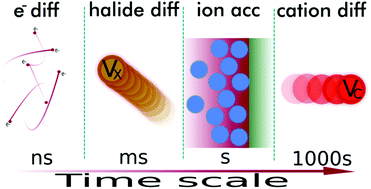Kinetic and material properties of interfaces governing slow response and long timescale phenomena in perovskite solar cells
Abstract
The last decade has witnessed the skyrocketing progress of perovskite solar cells (PSCs) with their current world record energy conversion efficiency reaching over 24%. Nevertheless, the unsatisfactory device stability and current–voltage hysteresis normally observed with most PSCs under operational conditions are the bottlenecks that restrict the application of this photovoltaic technology in practice. It is known that interface properties are at the heart of an electronic device's performance. Understanding the interactions occurring at the interfaces is important to design and develop effective strategies to address these issues associated with PSCs. In this review, we summarize the most recent advancement in understanding the interfaces in PSCs, in particular the interfaces of perovskite/electron transport layer (ETL) and perovskite/hole transport layer (HTL). Our main interest is to provide guidance on the immense complexity of dynamic behaviours of PSCs, particularly concerning the slowest time scale measurements that have a maximum impact on the actual operation of the solar cell. Therefore we address the separation of phenomena such as ion migration, interfacial charge accumulation, and surface electrochemical reactions. We provide an analysis of electrooptical small perturbation methods, including impedance spectroscopy (IS), and a description of negative capacitance, as well as spatially resolved techniques. The impact of different contacts with variable morphology and composition on the perovskite/ETL and perovskite/HTL interface properties reflected by the kinetics of charge transport and chemical reactions is discussed to provide deep insights into the operational mechanism of PSCs. We reach the conclusion that a number of measurements observed in the time frame of 0.1 to 10 s are due to the slow response of the ionic double layer, and we identify the asymmetric surface charge and discharge processes responsible for such kinetic effects. We also suggest the research direction regarding new approaches to understanding interfacial reactions of PSCs to achieve high device performance in the future.



 Please wait while we load your content...
Please wait while we load your content...